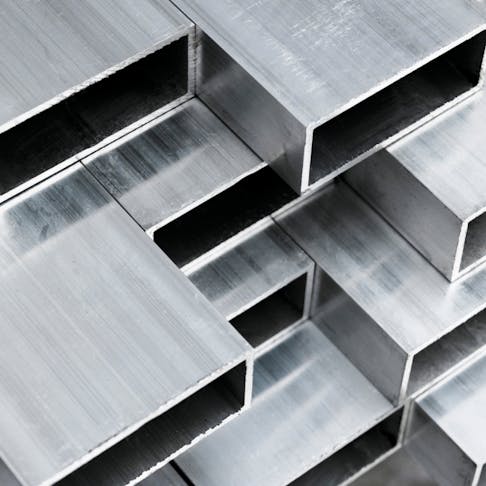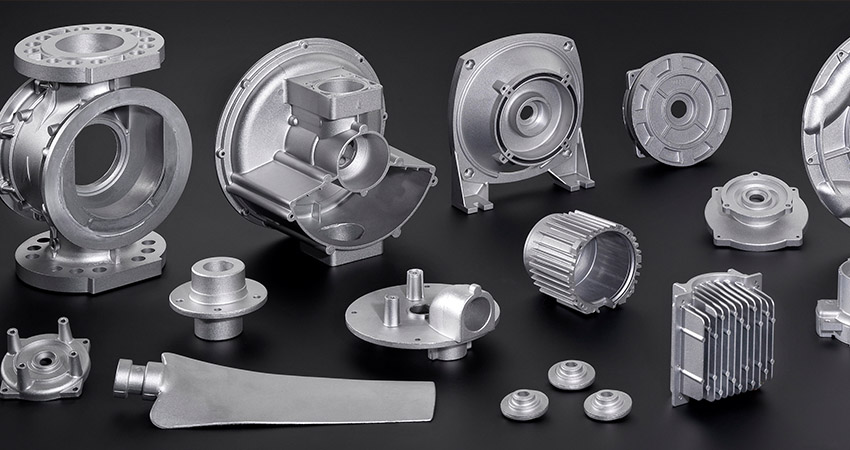Aluminum Casting explained: Everything you need to know
Whatever You Need to Know Regarding the Uses and Advantages of Aluminum Castings
Aluminum castings play a crucial duty throughout different markets, supplying one-of-a-kind homes that improve product efficiency. Their lightweight nature and stamina make them optimal for applications in vehicle and aerospace fields. In addition, the versatility of casting methods enables elaborate layouts and limited tolerances. As the need for lasting remedies climbs, recognizing the benefits and applications of aluminum castings ends up being significantly crucial. What certain advantages do they provide over various other products?
Summary of Aluminum Casting Processes
Aluminum casting procedures include a range of strategies made use of to shape liquified aluminum right into desired types. These techniques consist of sand casting, pass away casting, and financial investment spreading, each offering distinct benefits depending on the application (Aluminum Casting). Sand casting involves developing a mold from sand, permitting complex designs and large parts, while die spreading makes use of high stress to infuse molten aluminum right into metal mold and mildews, making sure precision and smooth surfaces. Investment casting, also called lost-wax casting, generates complicated forms with superb dimensional accuracy, making it suitable for detailed parts
These procedures are characterized by their capacity to create light-weight, long lasting components that show excellent deterioration resistance. The convenience of aluminum permits personalization in various industries, from automotive to aerospace. Furthermore, the capacity to recycle aluminum boosts the sustainability of these casting processes, minimizing environmental impact while keeping material honesty. Recognizing these strategies is vital for maximizing production performance and accomplishing high-grade aluminum castings.
Trick Applications of Aluminum Castings
Aluminum castings play a vital function across numerous sectors, specifically in automotive, aerospace, and consumer electronics. In the automotive sector, they add to light-weight structures that enhance fuel performance. In a similar way, aerospace components take advantage of aluminum's strength-to-weight proportion, while customer electronics leverage its adaptability for reliable manufacturing.
Automotive Market Applications
As the auto sector remains to develop, manufacturers increasingly count on aluminum castings for their lightweight yet durable homes. These castings play an essential function in enhancing lorry performance, gas efficiency, and overall safety and security. Trick applications include engine blocks, transmission housings, and structural components, which take advantage of aluminum's outstanding strength-to-weight proportion. Furthermore, aluminum castings assist in complex geometries, enabling innovative styles that enhance aerodynamics and minimize drag. The deterioration resistance of aluminum additionally contributes to durability, decreasing maintenance expenses for both makers and customers. As electric lorries gain popularity, aluminum castings are necessary for battery enclosures and other components, additionally solidifying their importance in the future of automobile production.
Aerospace Part Production
In the aerospace field, aluminum castings are indispensable to the production of light-weight, high-performance parts. These castings are important for making components such as engine housings, architectural structures, and landing equipment parts, where weight reduction is essential for fuel efficiency and total efficiency. The exceptional strength-to-weight ratio of aluminum enables for the advancement of intricate geometries that improve the rules of aerodynamics. Furthermore, aluminum's resistance to rust adds to the long life and reliability of aerospace parts, guaranteeing safety and security in trip operations. The spreading process likewise enables specific resistances, which is essential in conference stringent aerospace market criteria. In general, aluminum castings play an essential duty in progressing aerospace technology while supporting the industry's promote lasting practices.
Customer Electronic Devices Production
Using aluminum castings in customer electronics manufacturing has actually come to be increasingly considerable as a result of their light-weight and durable residential or commercial properties. Manufacturers leverage these castings to develop parts for various gadgets, including mobile phones, laptops, and pc gaming consoles. Aluminum's excellent thermal conductivity likewise aids in warm dissipation, improving gadget efficiency and longevity. In addition, the convenience of aluminum enables intricate designs and complicated geometries, enabling sleek and modern-day looks that attract customers. In addition, aluminum castings can be quickly recycled, lining up with the expanding demand for lasting production techniques. As technology advancements, the duty of aluminum castings in establishing ingenious and reliable customer electronic devices is expected to broaden, making them a staple in the industry.

Benefits of Utilizing Aluminum Castings
While numerous materials are available for casting, aluminum stands apart as a result of its distinct mix of lightweight buildings, stamina, and corrosion resistance. The reduced thickness of aluminum makes it an excellent option for applications where weight decrease is critical, such as in the automotive and aerospace markets. Its exceptional strength-to-weight proportion permits producers to develop resilient elements without including excessive weight.
Additionally, aluminum castings can be generated with elaborate designs and limited resistances, allowing intricate geometries that are hard to accomplish with other materials. The adaptability of aluminum enables various casting approaches, including sand, pass away, and investment spreading, satisfying diverse production needs. Moreover, aluminum's simplicity of machining and ending up enhances its appeal, promoting the production of high-grade surface coatings. Overall, the advantages of utilizing aluminum castings contribute to enhanced performance and effectiveness in countless applications throughout various markets.
Deterioration Resistance in Aluminum Castings

Natural Oxide Layer
An all-natural oxide layer kinds on the surface area of aluminum castings, offering a necessary barrier versus ecological factors that can bring about damage. This thin, safety film is a result of the aluminum's response with oxygen in the air, properly protecting the underlying steel from dampness, chemicals, and contaminants. As an outcome, aluminum castings display impressive corrosion resistance, which boosts their long life and sturdiness in numerous applications. The oxide layer is not only advantageous for defense however additionally contributes to aesthetic top qualities, as it can establish a matte coating that several markets like. Additionally, this all-natural procedure minimizes the demand for additional layers, making aluminum castings a cost-efficient choice for producers looking for dependable, long-lasting materials.
Alloy Variants Effect
The composition of aluminum alloys greatly influences their deterioration resistance buildings in castings. Different alloy variations, such as 1xxx, 2xxx, and 6xxx collection, display distinct levels of vulnerability to deterioration. For instance, 1xxx alloys, mostly made up of pure aluminum, offer superb corrosion resistance due to their high pureness. In contrast, 2xxx alloys, which consist of copper, might experience substantial deterioration when subjected to rough environments. Meanwhile, 6xxx alloys, integrating magnesium and silicon, strike a balance in between strength and resistance. The visibility of alloying elements can enhance or diminish protective oxide layers, ultimately affecting long life and performance. Recognizing these variations is vital for picking see this the best alloy for particular applications where corrosion resistance is crucial.
Design Adaptability and Customization
Numerous products exist for casting applications, aluminum stands out due to its impressive layout versatility and YOURURL.com potential for customization. This convenience permits designers and engineers to develop elaborate forms and kinds that satisfy specific useful demands. Aluminum Casting. The reduced thickness of aluminum allows light-weight styles, which is particularly valuable in sectors such as automotive and aerospace, where weight reduction is essential
Aluminum castings can be tailored to different specifications, including wall surface density, surface area finish, and dimensional resistances. This versatility not just improves the aesthetic allure however additionally enhances the efficiency of the final product. In addition, advanced strategies such as 3D printing and computer-aided design (CAD) additional facilitate the personalization procedure, allowing rapid prototyping and minimizing lead times. Aluminum castings can efficiently meet the varied requirements of different markets while supplying makers the ability to innovate and respond promptly to market needs.
Contrast With Other Casting Materials
While various casting materials each have their unique advantages, aluminum regularly demonstrates remarkable residential properties that make it a recommended selection in several applications. Contrasted to iron and steel, aluminum is substantially lighter, which lowers the total weight of ended up products, boosting gas performance in automobile and aerospace sectors. In addition, aluminum uses outstanding corrosion resistance, calling for much less upkeep with time contrasted to products like iron, which can corrosion.
When compared with plastics, aluminum's toughness and longevity go beyond numerous synthetic choices, making it suitable for demanding settings. On top of that, aluminum's thermal and electric conductivity is remarkably greater than most various other steels, making it excellent for applications calling for reliable warmth dissipation or electric components.

Future Trends in Aluminum Casting Modern Technology
Developments in aluminum spreading technology are established to redefine its applications throughout different sectors. Developments in automation and robotics are streamlining manufacturing processes, improving performance and accuracy. The combination of expert system and artificial intelligence allows real-time tracking and anticipating maintenance, decreasing downtime and boosting quality assurance.
The advancement of innovative alloys is increasing the efficiency abilities of aluminum castings, making them ideal for more demanding applications, particularly in automobile and aerospace markets. Sustainable techniques are also acquiring grip, with increased emphasis on recycling aluminum and decreasing carbon footprints throughout production.
Additive production strategies, such as 3D printing, are being checked out to develop complicated geometries that standard approaches can not achieve, permitting better style versatility. These patterns show a future where aluminum spreading will certainly not just meet but exceed sector expectations, driving innovation and sustainability in production.
Frequently Asked Concerns
Just How Are Aluminum Castings Recycled After Usage?
Aluminum castings are commonly collected, cleaned up, and processed in reusing centers. The product is melted down, improved, and afterwards reformed right into brand-new products, therefore conserving resources and lowering ecological influence while preserving aluminum's desirable residential or commercial properties.
What Are the Normal Prices Connected With Aluminum Castings?
The regular prices connected with aluminum castings differ based upon elements such as intricacy, volume, and product requirements. Typically, costs range from a few dollars per extra pound to considerably greater amounts for intricate styles and large quantities.
How Do Aluminum Castings Contrast in Weight to Steel Castings?
Aluminum castings evaluate substantially less than steel castings, typically around one-third the weight (Aluminum Casting). This lowered mass enables for easier handling, transport, and application in numerous industries, adding to boosted performance in layout and manufacturing processes
What Industries Largely Depend On Aluminum Castings?
Different industries considerably find out rely on aluminum castings, including auto, aerospace, electronics, and durable goods. Their light-weight nature, corrosion resistance, and convenience make them vital for producing parts in these sectors, improving efficiency and effectiveness.
Are There Any Kind Of Health Dangers Connected With Aluminum Casting Processes?
Health risks related to aluminum casting procedures consist of direct exposure to fumes, dirt, and chemicals, which can cause respiratory system concerns and skin irritability. Appropriate precaution and equipment are necessary to mitigate these potential hazards in the work environment.